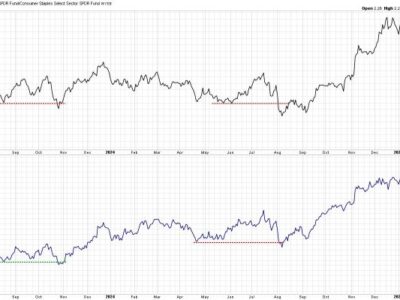
Recent years have brought significant changes to Idaho public finances. In addition to rapid increases in population and tax revenue, the state experienced a sharp increase in its Medicaid costs. Legislators, worried that a continued escalation could jeopardize the state’s robust fiscal health, created a task force to investigate whether the state could better control Medicaid spending growth by implementing managed care. While switching beneficiaries from traditional fee‐for‐service coverage to managed care is intuitively attractive, it may not be the right choice for Idaho policymakers in 2023.
The accompanying figure shows the state’s actual costs for the ten fiscal years ending FY 2022, a near final estimate of FY 2023 expenditures based on a review of remittances from the State Controller’s Transparent Idaho platform, and budgeted amounts for FY 2024. The most rapid cost escalation occurred since FY 2020.
According to the Centers for Medicare and Medicaid Services, Idaho Medicaid enrollment soared from 242,000 in December 2019 to 419,000 in March 2023, the last month for which data are available. Although some of this growth may be linked to migration into the state, two other factors were more critical. First, Idaho implemented Medicaid expansion at the beginning of 2020, allowing all adults with incomes up to 138% of the federal poverty level to join the program. Second, the federal government prohibited states from removing beneficiaries who no longer qualified for the program from the Medicaid rolls during the COVID public health emergency. This prohibition ended in April and Idaho should be able to reduce its beneficiary count in the coming months by conducting systematic eligibility redeterminations.
So, it is reasonable to conclude that Idaho’s Medicaid cost growth is more the result of an expanded enrollment base than of rising costs per enrollee, which is the problem managed care is supposed to address. Managed care promises to lower costs by restricting and coordinating a plan member’s use of medical services. Instead of seeing any provider that accepts coverage, the enrollee receives care from within the Managed Care Organization’s (MCO) provider network. The MCO receives a fixed “capitation” payment from the state for each covered beneficiary each month.
While Medicaid MCOs can save money by restricting the range of available providers, they cannot use a second lever that MCOs usually rely upon in the private insurance market to control costs: patient responsibility payments. Federal policy generally does not allow Medicaid MCOs to impose copayments or deductibles. As a result, Medicaid patients have no financial disincentive to seek medical care.
Two other factors militate against the ability of Medicaid managed care to yield significant savings. First, the MCO must cover its costs and earn a profit for its owners (and even a not‐for‐profit MCO can be expected to pursue revenues greater than expenses to build internal reserves). The largest for‐profit Medicaid MCO, Centene Corporation, reported a $2 billion pretax profit on $145 billion in revenue for 2022. This is a modest profit margin, but the company also had $12 billion in selling, general and administrative expenses. (These amounts are company‐wide totals including Centene’s Medicare and private plan management activities, as well as its Medicaid Managed Care services.)
A second consideration is that MCOs are compensated for inactive Medicaid enrollees. If someone on Medicaid gets other coverage, he or she may start using that alternative coverage without advising the state Medicaid office. The individual thus remains on the rolls even though he or she is not using services. Under a fee‐for‐service model, this is not an issue from a state budgeting standpoint because the individual does not generate any provider claims. But if that same individual is in managed care, the MCO will continue receiving per member per month (PMPM) payments until the state determines that he or she is no longer eligible.
There is some evidence that this latter effect can be large. In response to a public records request, a Los Angeles‐based publicly owned Medicaid MCO told this author that 327,000 or 29% of its 1.125 million members did not receive any services during the 2021–22 fiscal year. The proportion of inactive beneficiaries may have been especially high that year due to the federal prohibition on redetermining eligibility discussed earlier.
Empirical research on cost savings from Medicaid Managed Care has yielded mixed results. A 2012 meta‐analysis found a “paucity of evidence on cost savings from Medicaid managed care.” A more recent meta‐analysis cited by Idaho’s consulting firm, Sellers Dorsey, found some evidence of cost savings from Medicaid managed care in Florida, Kentucky, and Pennsylvania. However, the consultant characterized these findings as anecdotal and state specific. Sellers Dorsey concluded: “While managed care typically does not (at least, not initially) reduce costs to the State, it can bring budget stability and predictability through the rate setting process and the transition of financial risk to the managed care entities.”.
It is commendable that Idaho legislators stood up a task force to investigate a commonsense way to save state and federal taxpayers money on the state’s growing Medicaid program. But the case for Medicaid Managed Care is decidedly mixed, and so it is important that the task force consider not only how to extend managed care in Idaho but whether to do so. Although the task force report is due on January 31, 2024, we may not have enough data to know by then whether the return of Medicaid redeterminations has sharply bent the program’s cost curve. It may thus be wise to defer any decision on managed care for several additional months.








